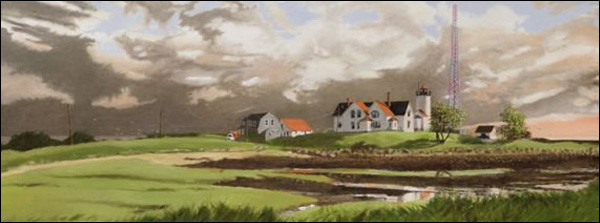Remembered Springs
“Every summer, my mother, whose stage name was Sherry Linden, worked as a pianist/singer in different resort towns throughout New England. When I was eleven, she began working at the famous Oceanside Hotel, a sprawling place overlooking the rocky coast of Magnolia, on the north shore of Massachusetts—a tiny Cape Ann village snuggled between Manchester-by-the-Sea and Gloucester. I stayed in Magnolia with her and my younger brother, Jerry, for nine summers.”—Meredith d’Ambrosio
The Disappearing Land
By Meredith d’Ambrosio
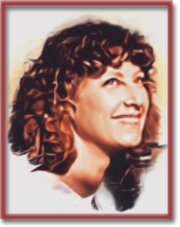 Editor’s Note: Jazz vocalist and lyricist Meredith d’Ambrosio, for a brief and creative spell before a major exhibition of her work, shared her paintings with Hubris’s readers. This little portfolio first appeared here in April of 2014. We miss you, Meredith!
Editor’s Note: Jazz vocalist and lyricist Meredith d’Ambrosio, for a brief and creative spell before a major exhibition of her work, shared her paintings with Hubris’s readers. This little portfolio first appeared here in April of 2014. We miss you, Meredith!
DUXBURY Massachusetts—(Hubris)—1 March 2023—
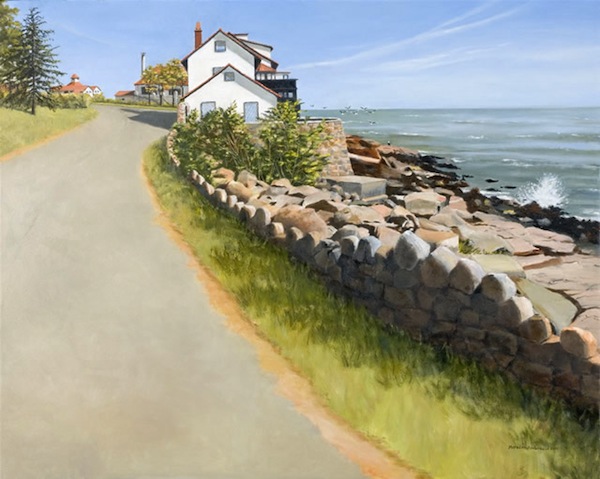
Every summer, my mother, whose stage name was Sherry Linden, worked as a pianist/singer in different resort towns throughout New England. When I was eleven, she began working at the famous Oceanside Hotel, a sprawling place overlooking the rocky coast of Magnolia, on the north shore of Massachusetts—a tiny Cape Ann village snuggled between Manchester-by-the-Sea and Gloucester. I stayed in Magnolia with her and my younger brother, Jerry, for nine summers. The following summer, after the Oceanside had burnt to the ground for the second time since the late 1920s, never to be restored again, my enterprising mother began playing at Hakim’s, an elegant restaurant and piano bar known for its Egyptian and French cuisine. Those nine years were the most exciting of my life.
My father would spend the weekends with us, showing us how to dig for soft-shelled clams and quahogs, and teaching us how to shuck them. It amused me when they had trouble shucking a difficult cherrystone clam and would toss it to me to me to finish the job. Most summers, we lived in cottages on Magnolia Beach, where my father, in his flippers, wet suit, snorkel, and spear, would disappear into the freezing water and, many minutes later, would emerge with a basket of lobsters which he managed to pull from the rocks on the ocean floor. One time, he captured 32 lobsters: he was an adventurous soul.
The famed Coolidge Estate was built high atop the rocky end of the horseshoe-shaped beach. I couldn’t resist climbing the boulders to have a closer look at the mysterious looking house. I sat on their dock and broke open periwinkles to hook on my fishing line; then proceeded to catch about 20 bonefish, which I later brought home to scale and fry. But most of my days were spent exploring the tide pools around the edges of the flat rocks (in the painting above), where I would discover starfish, urchins, crabs, and hermit crabs. The seagulls in the painting are flying past the Hammond Castle towards Gloucester. On the days I was not discovering sea animals on these rocks, I would comb Magnolia Beach to collect hundreds of small limpets—monovalves washed up on the shore, which looked like colorful “Mexican hats.” Many memories of my summers in Magnolia still tug at my heart.
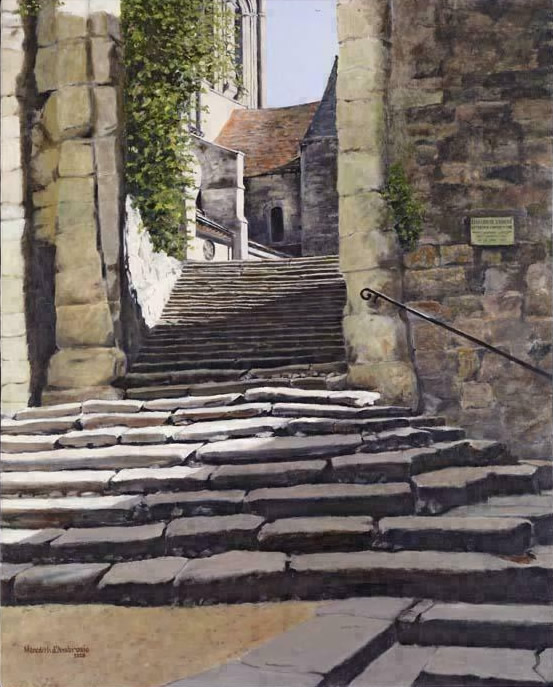
My husband Eddie Higgins and I, and the great bassist Patrice Carratini, were invited to perform at the third annual Festival of Jazz of Auvers-sur-Oise. Our host, Herve Czak, walked us around the village the afternoon before we performed that evening at the 14th century church. We turned a corner and my heart almost stopped as my eyes followed the ancient stairs to to the top. “If you pass through that door at the top of the stairs, that is where you will perform tonight.” I couldn’t speak because my mouth was still open. We walked behind the church and found the grave of Vincent Van Gogh next to that of his brother Theo. I stood up and recognized one of the expansive vistas painted by Van Gogh. He must have spent his time creating behind that church. That memorable evening, we performed to a full and respectful audience. Patrice bowed his bass to sound like a cello. One could hear a pin drop during the whole performance.
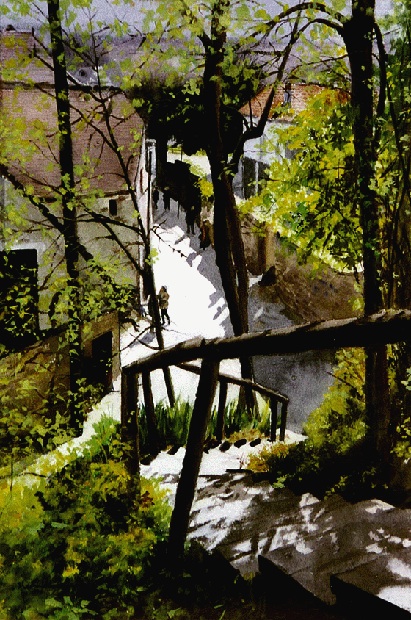
Following our concert on Bateau Daphne, Eddie and I spent the next afternoon walking with our host, Herve, who gave us a tour around the village. This is my favorite spot in Auvers-sur-Oise. I didn’t recognize this scene as one of Van Gogh’s, and found myself wondering why he hadn’t chosen the scenes I chose to represent. When my eyes followed the steps down and around, to the end of the street, I wondered where this road led as it curved and disappeared, and what those people were talking about in the street below. The translucent leaves of early Spring were stretching from their buds, making the statement, “We’re free! All of us leaves are free!” . . . Oh, to be a leaf.
